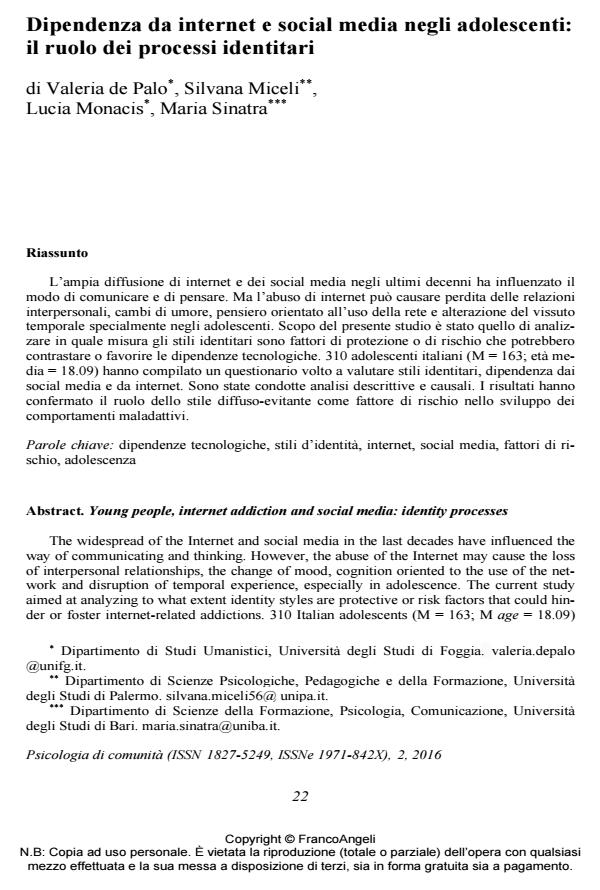Dipendenza da internet e social media negli adolescenti: il ruolo dei processi identitari
Titolo Rivista PSICOLOGIA DI COMUNITA’
Autori/Curatori Valeria de Paolo, Silvana Miceli, Lucia Monacis, Maria Sinatra
Anno di pubblicazione 2017 Fascicolo 2016/2
Lingua Italiano Numero pagine 10 P. 22-31 Dimensione file 148 KB
DOI 10.3280/PSC2016-002003
Il DOI è il codice a barre della proprietà intellettuale: per saperne di più
clicca qui
Qui sotto puoi vedere in anteprima la prima pagina di questo articolo.
Se questo articolo ti interessa, lo puoi acquistare (e scaricare in formato pdf) seguendo le facili indicazioni per acquistare il download credit. Acquista Download Credits per scaricare questo Articolo in formato PDF

FrancoAngeli è membro della Publishers International Linking Association, Inc (PILA)associazione indipendente e non profit per facilitare (attraverso i servizi tecnologici implementati da CrossRef.org) l’accesso degli studiosi ai contenuti digitali nelle pubblicazioni professionali e scientifiche
L’ampia diffusione di internet e dei social media negli ultimi decenni ha influenzato il modo di comunicare e di pensare. Ma l’abuso di internet può causare perdita delle relazioni interpersonali, cambi di umore, pensiero orientato all’uso della rete e alterazione del vissuto temporale specialmente negli adolescenti. Scopo del presente studio è stato quello di analizzare in quale misura gli stili identitari sono fattori di protezione o di rischio che potrebbero contrastare o favorire le dipendenze tecnologiche. 310 adolescenti italiani (M = 163; età media = 18.09) hanno compilato un questionario volto a valutare stili identitari, dipendenza dai social media e da internet. Sono state condotte analisi descrittive e causali. I risultati hanno confermato il ruolo dello stile diffuso-evitante come fattore di rischio nello sviluppo dei comportamenti maladattivi.
Parole chiave:Dipendenze tecnologiche, stili d’identità, internet, social media, fattori di rischio, adolescenza
Jel codes:I12
Valeria de Paolo, Silvana Miceli, Lucia Monacis, Maria Sinatra, Dipendenza da internet e social media negli adolescenti: il ruolo dei processi identitari in "PSICOLOGIA DI COMUNITA’" 2/2016, pp 22-31, DOI: 10.3280/PSC2016-002003